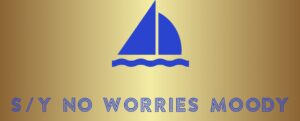A Kermode Bear is known by the Aboriginal People of the Pacific North West as ‘The Spirit Bear ‘or ‘Ghost Bear’. this sub-species of the Black Bear lives only on and near Canada’s Pacific Northwest Coast. This rare animal is found on some of the larger remote islands of the North Coast and along the Skeena River which flows through the city of Terrace before entering the Pacific Ocean 140km to the west near Prince Rupert. Now a days the sighting of a Kermode bear is something that is very special and is an event that many wish for themselves. Black Bear and Grizzly show up more often in this and other areas. Kermode bear has a white thick fur. It is no an albino it is a true white bear.
In the middle in August as we drove along the Skeena River Valley area we saw something white moving faraway. We stopped the car to check it out. By now we are pretty much sure this is a rarely seen bear. (estimates vary between 400 and 1000) The large white body in middle of the big green grass seemed to enjoy eating plants and moved slowly. This Kermode that we saw it could be a male bear since it is without any cub and big body. Females are much smaller. We can guess for the weight this one should be more than 200 kg. as from the information that a male bear weight can reach up to 290 kg. Some people never have a chance to see the real one but it is often depicted in picture and statues around the city.
Using zoom lens to get some impressive move of the beautiful bear, we watch it for a while because we never know when will this pretty bear will show up again.

White fur occurs in only one of every 40 to 100 black bears on the British Columbia mainland coast, but the trait is especially pronounced on certain islands in the Great Bear Rainforest. On Princess Royal Island, one in ten black bears is white. On Gribbell Island, directly north of Princess Royal, it’s one in three. Biologist Wayne McCrory of the Valhalla Wilderness Society calls Gribbell “the mother island of the white bears.” – National Geographic














Amazing you saw a spirit bear! What a special moment. A blessing.
Thank you for visiting my blog. I guess you found the posts about the places you’d like to go when the boat is ready. What an exciting adventure awaiting you. When do you think you’ll go?
You certainly live in a beautiful place. We lived in Vancouver for many years so know the Pacific North West – a lovely part of the world. But we’ve never seen a spirit bear!
Alison
Hi Alison-Don, Thank you for your kind comment. you are welcome and I am glad to know a nice blog where I can read about interesting place like cook island that we think to sail out there. I like to read about place and experienced or see long time photos, vision of life. thank you for sharing this place and experienced. we will test the boat in Spring and by our plan is beginning of summer. I will Keep update our work. 🙂
Good luck with all your plans 🙂